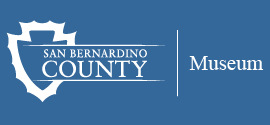|
DISCOVER WILD
The Discover Wild kit is designed to allow students from grades K to 8 to explore the fascinating world of wild animals in a unique, ecological way. This kit can be used in conjunction with these study kits: Making Tracks and Skulls. The activities in each of these kits will stimulate student awareness in ecology and encourage conservation as the class explores different facets of animals familiar to North America.
Kit contents include:
Fifteen separate animal fur specimens, each enclosed in its own video-sized container. The containers feature a colored photograph of the animal, a color-coded map of North America showing the historic range of the animal, and information including animal features, key facts, habitat, diet, breeding, habits and human interaction. This is perfect for tactile learning.
The animal fur specimens are from these mammals: Arctic fox, red fox, bobcat, Lynx, coyote, elk, deer, beaver, river otter, mink, muskrat, nutria, badger, raccoon, and opossum.
Teacher’s Guide to Discover Wild, including nine units with curriculum for science, Language Arts and Social Studies. Concepts and processes vary for each unit. The guide includes many classroom discussion topics as well as background information. Each unit has at least five Learning Challenge reproducible worksheets.
Appendices – A: Answer Keys; B: Glossary; C: Bibliography;
UNIT |
TITLE |
SUBJECTS
CONCEPTS
PROCESSES |
1 |
What is Wild and What is Not |
Science, Language Arts, Social Studies
Cause & Effect, Interaction, Invariance
Classify, Infer |
2 |
Food Chains |
Science, Language Arts, Social Studies
Cause & Effect, Interaction, Invariance, Population, System, Field
Classify, Communication, Infer, Prediction, Question |
3 |
You Are What You Eat |
Science, Language Arts, Social Studies
Cause & Effect, Interaction, Organism, Evolution, Fundamental Entities, Interaction, Scale Model, Theory, Quantification, Population
Classify, Communicate, Hypothesize, Design Experiments, Predict, Use Numbers, Infer |
4 |
Habitat |
Science, Language Arts, Communication, Art
Cause & Effect, Change, Interaction, Population, System, Field
Classify, Communication, Infer, Prediction, Question |
5 |
Carrying Capacity |
Science, Language Arts, Social Studies, Math
Cause & Effect, Change, Interaction, Population, System Field, Cycles, Time-Space
Infer, Predict, Relate Time-Space |
6 |
Home in the Range |
Science, Social Studies
Cause & Effect, Change, Cycle, Organism, Population, Interaction, Order, System, Time-Space, Field
Classify, Infer, Predict, Relate, Time-Space |
7 |
Adaptation and Extinction |
Science, Language Arts, Social Studies
Cause & Effect, Change, Cycle, Organism, Population, Evolution, Interaction, Order, Probability, Theory, Perception, Invariance
Classify, Communicate, Define Operationally, Hypothesize, Infer, Observe, Predict, Relate, Time-Space |
8 |
Wildlife Conservation |
Science, Social Studies, Communication, Career Education, Home Economics, Political Science
Cause & Effect, Change, Cycle, Organism, Interaction, Order, System, Perception
Classify, Define Operationally, Infer, Interpret Data, Observe, Use Numbers |
9 |
Fun with Discover Wild |
Science
Tactile & Visual Interaction, Communication,
Infer, Classify, Communicate |
LEARNING STYLES ADDRESSED IN DISCOVER WILD INCLUDE:
Visual-spatial – The kit contains visual features including specimens, photographs and worksheets.
Verbal-linguistic – Shared orally or in written format, background information provides much detail. Classroom discussions allow all to participate
Physical-kinesthetic – The value of this kit is the touchable animal fur, sure to stimulate interest in the animal it represents
Logical-mathematical – The math-based activities in Discover Wild allow for this style of learning.
Auditory-musical – Students can research represented animal sounds and share these with the class. Younger students will enjoy mimicking the animals’ sounds.
Interpersonal – Students will find many things to discuss and share. Many of the activities are appropriate for group work.
Solitary-intrapersonal – The intrapersonal learner can learn by reading or solitary projects work.
CALIFORNIA CURRICULUM and CONTENT STANDARDS of DISCOVER WILD
|



![]()